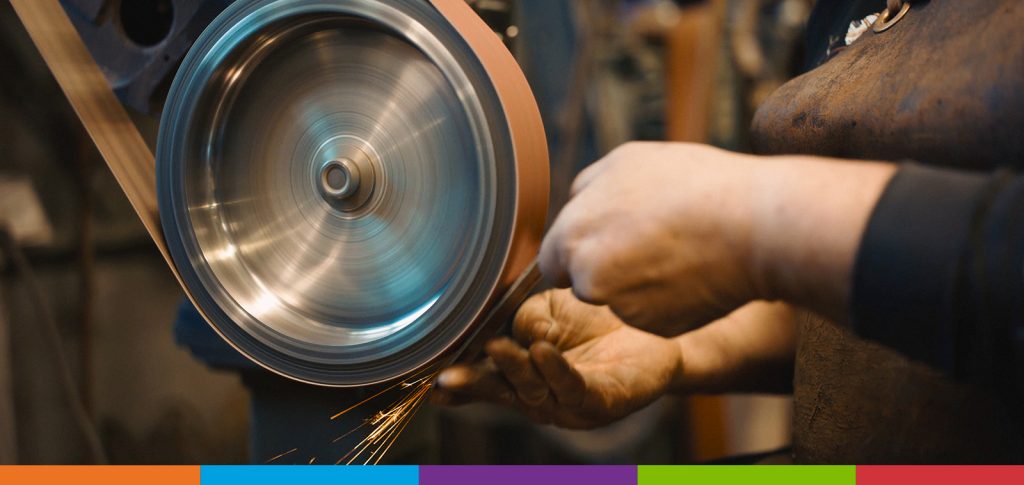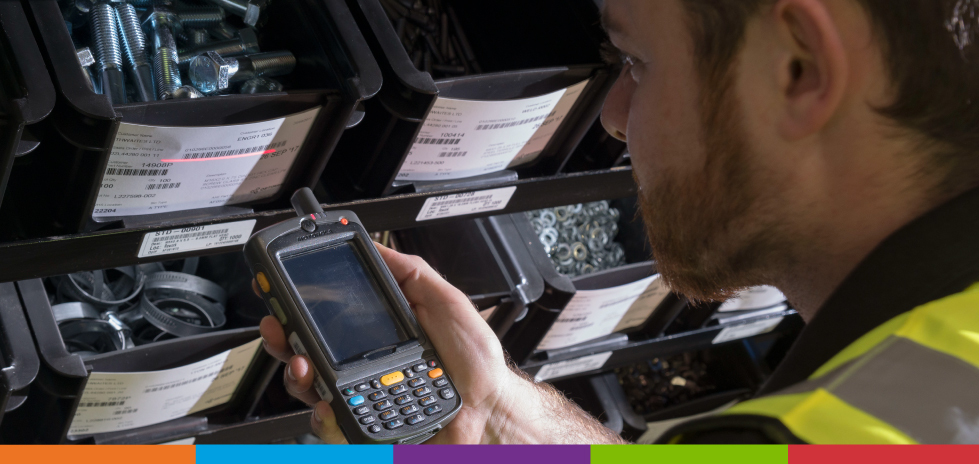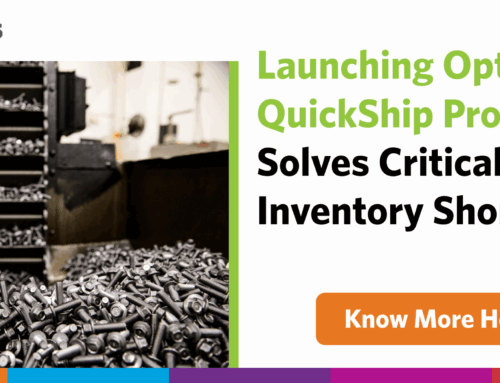
Soluciones finales: Cree una experiencia de contrato en la que todos ganen
Una cadena de suministro saludable puede ayudar a estabilizar un negocio incluso en las economías más difíciles. Para muchas empresas, 2020 supuso un golpe devastador para sus resultados al introducir un nivel de incertidumbre en las operaciones diarias que pocas habían experimentado. Muchas empresas enfrentaron nuevos desafíos de producción y personal, así como requisitos de trabajo remoto y protocolos de seguridad adicionales. Algunas empresas encontraron una demanda nunca antes vista, mientras que otras vieron un cráter de demanda y se vieron abrumadas por una acumulación de inventario.
Whether your business is booming, vulnerable, or you're hanging on by a thread, making good decisions about your bottom line can accelerate growth and inject certainty back into your operations.
"Manufacturers are always looking for ways to increase their bottom line by finding and eliminating deficiencies in the supply chain. And this has never been more true or relevant than in the past year," says Jim Japczyk, Chief Financial Officer for Optimas.
There's no quick fix to re-strengthening the supply chain. It will take time and not every company will come out better, but for those that do, it can start by reaffirming the trust of your suppliers and your customers.
- ¿Son sus contratos tan saludables como podrían ser?
- ¿Invocan un sentido de confianza en sus asociaciones nuevas y existentes?
- Can you sign on the dotted line knowing it's a win-win opportunity?
"Contracts provide an extra boost of certainty in business — an enterprise where you really want certainty," Japczyk advises. "The less you have to worry, the better. And if you can extend that certainty, that trust, beyond your business and into the supply chain, that benefits everybody. You never want to be the reason a customer's production line goes down and a healthy, well-intentioned contract can go a long way in ensuring everything runs smoothly."
What's the difference between a contract you could regret on Day 1 and a contract that allows for all parties to be well-represented?
Rebecca "Riv" Goldman is Senior Vice President and General Counsel for Optimas and responsible for streamlining our contracting process while reducing risk. As she suggests, "in a lot of ways, contracts are just contracts. They are legally enforceable pieces of paper. What elevates a partnership is often what you and your future partners do in the lead-up to signing the contract and how you communicate once the contract has been signed."
The team here at Optimas has accumulated decades of experience in all types of business partnerships along the parts supply chain and we are confident that our experience can assist your business in crafting a contract all parties are comfortable with. While there aren't many "secrets" behind contracts, the best ones work to include fairness and understanding to all parties.
Here's how your next contract — and all the ones that follow — can become your mejor contrato.
Ingrese a las negociaciones de contratos con los ojos bien abiertos
No todas las empresas iniciarán negociaciones de contratos en el mismo lugar. A raíz de la pandemia, surgieron tres nuevos dolores de cabeza en la cadena de suministro y probablemente afectarán la producción futura y las relaciones hacia arriba y hacia abajo de su cadena de suministro en los años venideros.
- El negocio huérfano: These businesses were left high and dry as suppliers went under. Depending on the company's size, one broken link in the chain can shut down an entire production line. This can have catastrophic consequences in the short-term and potentially no long-term future to speak of.
- El negocio vulnerable: Now your business is the one scrambling. Instead of being left out in the cold by someone else, internal issues are causing you to hinder production for your customers. Whether it is processes, systems, efficiencies, talent, or financial, you're no longer standing on solid ground and your partners are feeling it too.
- El negocio fuerte: Some businesses are doing as well or better during the pandemic than they were pre-2020. For them, it's about pulling ahead of a struggling competitor, uncovering new opportunities, and solidifying a reputation as a socio confiable de la cadena de suministro. El dolor de cabeza aquí se convierte en no hacer lo suficiente y saber que dejas escapar una oportunidad de crecimiento entre tus dedos.
"Each of these headaches present a unique risk — but they also present opportunities for stronger, healthier contracts if you can identify the situation you and your partners are in," explains Japczyk. "By understanding where each business is, you can craft a contract that helps everyone. That means communicating now and in the future is top priority."
Ponga a las personas adecuadas en su lugar
En Optimas, defendemos la importancia de las personas como columna vertebral de cualquier esfuerzo comercial y eso incluye el proceso de desarrollo de contratos.
"Don't think of the creation of a contract as a one-person job — due to its scope, it shouldn't be, and due to its importance, you don't want it to be," says Goldman. "Contracts are like any other process in a business where you are going to want multiple eyes on it."
A quién involucres dependerá del tamaño de tu negocio y las complejidades del contrato. Para la mayoría de las medianas empresas, esto incluye el equipo ejecutivo, el equipo legal y el equipo financiero. También puede incorporar ventas y compras, operaciones o ingeniería. Si tiene gerentes de cadena de suministro específicos u otro personal clave, también pueden estar involucrados.
Comprender los intangibles de un contrato ganar-ganar
Los contratos saludables apuntan a negocios saludables y los contratos más saludables son los que priorizan las necesidades de todas las partes.
"Much like any marriage, a contract between two businesses should allow this new partnership to be stronger than the sum of its parts," offers Japczyk. "Contracts can help determine costs, price points, technologies, customer service, lead times, and capabilities. They can also help you respond to future unforeseen challenges that arise and, in the event the partnership does have to end, can help eliminate any hard feelings during the separation."
Estas son solo algunas de las características intangibles de los contratos saludables:
- Equidad para todas las partes: You don't need to insert some type of "gotcha" clause to have a winning contract. What you sign today will create a partnership you may rely on for years or more. Ensuring fairness for all parties eliminates a lot of potential bad feelings that haunt a partnership later.
- Anticipación del cambio: Las circunstancias cambian y lo que hizo que un contrato fuera bueno cuando lo firmó puede no existir unos años más tarde o después de la rotación en el liderazgo. Si la relación tiene que terminar o si solo necesita arreglarse, las protecciones están integradas para que todos salgan del otro lado de una negociación con gracia.
- Límites incorporados: Piense en aquellas cosas que seguramente sucederán, pero que están fuera del control de cualquiera de las partes, como el precio de las materias primas. Acordar un índice creíble. Luego permita que los precios de las partes fluctúen de acuerdo con los cambios en el índice.
- Flexibilidad y vía de comunicación: Just because you've signed a contract, doesn't mean you need to be locked into that specific agreement. So much of business is about adapting to change and your contracts should similarly reflect that. Write your contracts with the understanding that something down the road could impact it and provide a process for amending the agreement if necessary.
- Claridad: You shouldn't have to have an MBA and 20 years of legal experience to decipher a contract. While contracts are legally enforceable, they should be written so that anyone from the C-suite and your legal team to other participants can clearly understand the agreement being made.
- Penas entendidas y ramificaciones: Ambas partes se benefician al saber qué puede suceder, y qué puede hacer cualquiera de las partes, en caso de que alguien se desvíe del acuerdo. Puede variar desde una multa hasta una separación completa o puede requerir cierto nivel de renegociación.
"Optimas has been focusing on these areas for all of our contract development efforts," explains Goldman. "By building these intangibles into every contract, we — Optimas and all of our contract partners — start off in a better place and we usually stay in a better place. It's not about winning the negotiation, it's about creating a circumstance where all sides win and all sides can enjoy open communication and greater business success."
Evite las banderas rojas obvias
La mayoría de los líderes empresariales con algunos años a sus espaldas pueden recordar una mala experiencia contractual. Puede dejar un mal sabor de boca, desconfianza en su mente e incluso una falta de voluntad para buscar futuras asociaciones que podrían beneficiar a su negocio.
"Nobody wants to feel like they are being taken advantage of, feeling forced into some agreement, or regretting a decision down the road," says Japczyk. "Sometimes bad contracts are because of things you can't control, but a lot of times, I've found, it's because one party ignored some obvious red flags from the start."
Aquí hay algunas señales de alerta comunes: considere correr hacia las colinas, o al menos comunicar sus inquietudes, si las encuentra en su próximo borrador de contrato:
- Mala documentación: No documentar completamente el acuerdo entre el proveedor y el cliente puede ser el precursor de malos sentimientos en el futuro. Es fundamental que cada parte comprenda lo que le debe a la otra y lo que esperan todos los involucrados.
- Un laberinto de aprobaciones: Los contratos que incluyen muchas aprobaciones para lo que deberían ser pasos regulares pueden subrayar un acuerdo demasiado complejo y exasperante. Las aprobaciones toman tiempo y, en lugar de agregar valor, pueden arruinar los trabajos y estancar asociaciones que de otro modo serían lucrativas.
- Being asked to sign "unfinished" agreements: Contracts are legally enforceable and bad ones can ruin a company's bottom line. Avoid any agreement that opens the door for future things to be added to a contract that already has your name on the dotted line.
Pensamientos finales
No importa en qué parte del contrato esté trabajando, una buena negociación solo concluye cuando todas las partes están satisfechas.
"Healthy contracts ensure both parties are treated fairly," advises Japczyk. "It may sound cliché, but the best thing you can do is go into a contract negotiation with the original Golden Rule in mind. Do unto others as you want done unto you. When you construct a contract, aim to deliver one you'd still be happy to sign if you were in the other person's shoes."
Everyone wants to win when they sign a contract, but that doesn't mean any side has to lose. Win-win contracts are the foundation for great supply chain partnerships and a benefit to your bottom line.
Cuando trabaja junto a Optimas, trabaja con un equipo que cree en éxito para todos mediante justicia para todos — with many of our most successful supplier and customer relationships dating back an average of 20 years. Is today the beginning of your company's next great business partnership? Iniciar una conversación con nuestro equipo y pruébanos!







